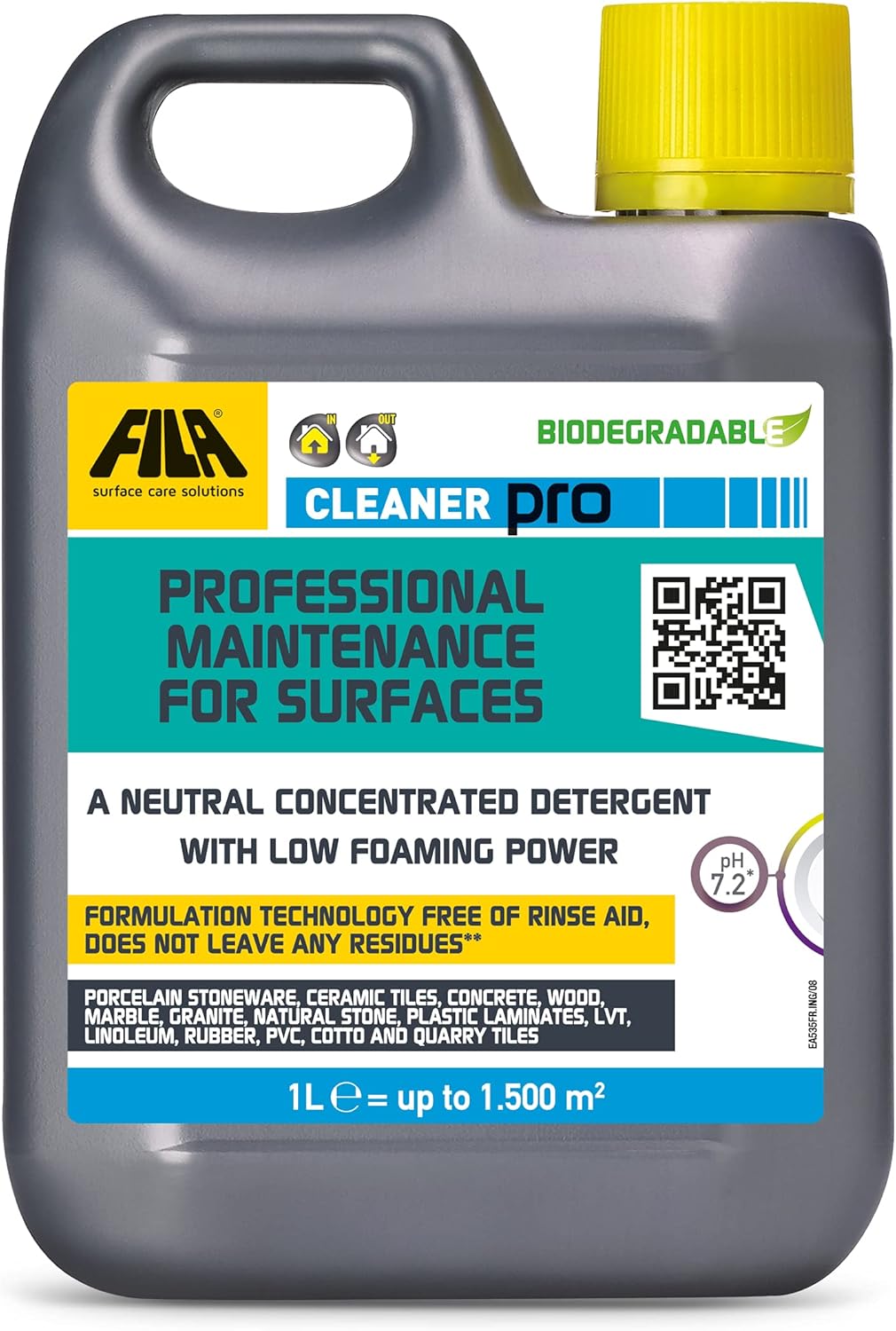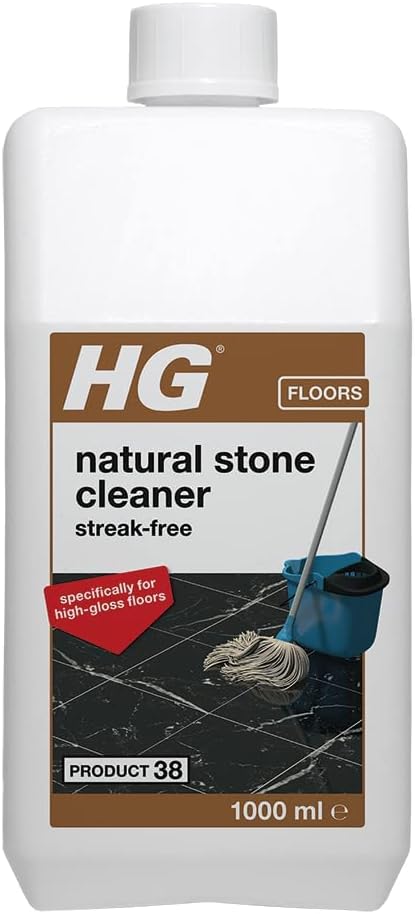Exploring the Intricacies of Marble Restoration Throughout the UK
Marble transcends mere materiality; it epitomises elegance and luxury, intricately connected with the architectural heritage of the UK. The historical relevance of marble is evident in numerous landmarks, ranging from majestic stately homes to celebrated public buildings, where it functions as both a visual spectacle and a testament to our cultural legacy. The marble restoration in Morden Park exemplifies the dedication to preserving this legacy, ensuring it remains functional and accessible for contemporary purposes. In this discourse, we will investigate the historical significance of marble restoration across the UK, typical damage causes, and the sophisticated techniques applied in this restoration process.
Uncovering the Rich Historical Context of Marble in the UK
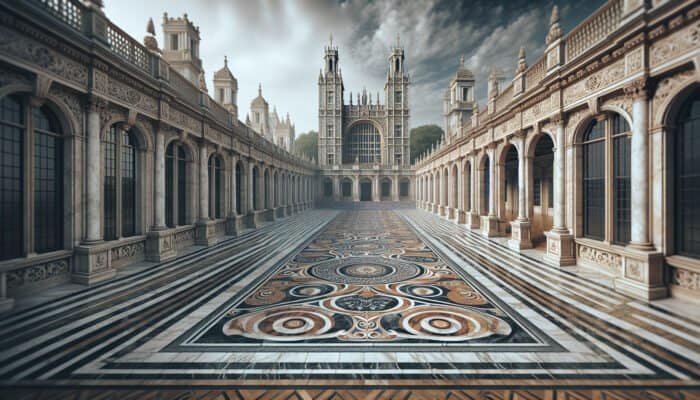
The existence of marble within the UK unfolds a rich tapestry of history that dates back centuries. Iconic structures such as the British Museum and Westminster Abbey are prime examples of the exquisite artistry embodied in marble. These historical sites not only showcase the architectural brilliance of their respective eras but also act as vital links to our national heritage. The intricate patterns and exceptional craftsmanship evident in these marble installations articulate the historical significance and the value placed on both durability and beauty. Consequently, marble restoration is not merely about maintenance; it represents a commitment to preserving our collective history. Each restoration contributes a new chapter to our heritage narrative, enabling future generations to appreciate the artistry and historical significance embedded within these remarkable surfaces.
Identifying Common Causes of Marble Damage and Deterioration
Across the UK, marble floors encounter a variety of environmental challenges that can lead to significant deterioration. One of the key contributors is weathering, which greatly accelerates surface erosion, particularly in regions prone to adverse weather conditions. The combination of rainfall and acidic pollutants further exacerbates this erosion, resulting in discolouration and compromising the structural integrity of the marble. Furthermore, heavy foot traffic in frequently used areas often leads to scratches and scuffs, detracting from the marble's polished finish. Recognising these prevalent causes of damage is essential for effective restoration. By understanding that the marble restoration process must tackle both aesthetic and structural concerns, restoration experts can devise comprehensive strategies tailored to the specific types of damage encountered.
Employing Advanced Methods for Effective Marble Restoration
The techniques utilised in marble restoration throughout the UK are diverse and require a high level of skill and expertise. The restoration process generally commences with cleaning, which may involve methods such as steam cleaning or the application of specially formulated chemical treatments designed to eliminate stains without harming the marble. Following this initial stage, professionals typically proceed with honing, a technique that smooths the surface and removes superficial scratches. For more extensive imperfections, polishing methods are employed to restore the original sheen, giving the marble a brand-new appearance. In cases of severe damage, such as cracks or chips, epoxy fillers are used to repair and restore structural integrity. These meticulously executed techniques ensure that the restoration of damaged floors meets both aesthetic standards and functional needs, preserving the inherent beauty and cultural significance of the marble surfaces.
Understanding the Regulatory Framework Governing Marble Restoration
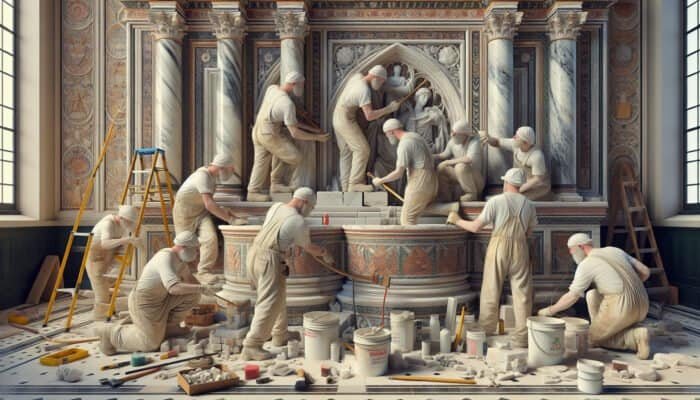
In the UK, marble restoration is governed by a variety of regulations designed to protect the historical integrity of buildings and materials. The Conservation Principles established by Historic England provide essential guidelines for restoration efforts, underscoring the importance of maintaining authenticity and historical context. Additionally, local planning regulations often dictate the types of materials and methods permissible during restoration projects. It is crucial for restoration companies to comprehend these legal frameworks to ensure compliance while safeguarding the cultural significance of their projects, such as the restoration of marble. This adherence not only protects the materials involved but also honours the legacy of the sites themselves.
Examining Successful Marble Restoration Case Studies
Analyzing successful marble restoration case studies across the UK offers valuable insights into best practices and effective methodologies. For example, the restoration of the marble floors at the Victoria and Albert Museum involved thorough cleaning and meticulous restoration of intricate designs, resulting in a renewed vibrancy that captivates visitors. Another noteworthy project is the restoration of the marble entrance at the National Gallery, where experts skillfully fused traditional methods with contemporary technology to achieve remarkable outcomes. These case studies underscore the varied techniques employed and the successful results achieved, reinforcing the essential role of professional expertise in effective marble restoration.
Pro Tip: Must-Have Products for Daily Marble Maintenance
Thorough Analysis of Notable Marble Restoration Projects
Detailed Restoration Initiatives at Buckingham Palace
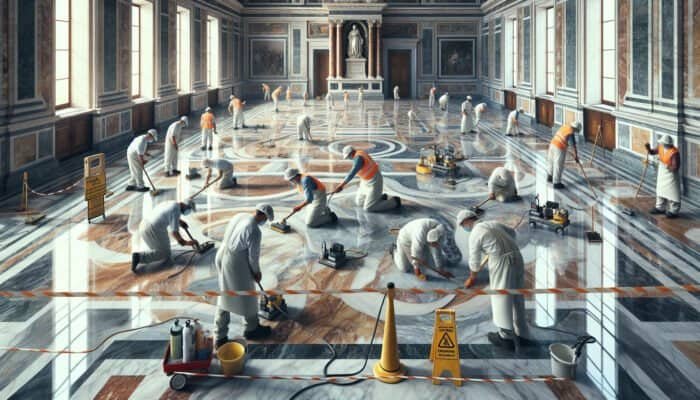
A prominent example of marble restoration is evident in ongoing efforts at Buckingham Palace, where the marble floors necessitate continual attention due to their historical significance and high levels of foot traffic. The techniques employed here involve meticulous cleaning to eliminate years of accumulated grime and stains, followed by honing to restore the marble’s pristine surface. Furthermore, restoration specialists encounter unique challenges, such as ensuring the palace’s historical accuracy while incorporating modern cleaning technologies. Through these restoration initiatives, Buckingham Palace not only retains its regal appearance but also guarantees the safety and comfort of its visitors, serving as a stellar example of effective marble restoration.
Comprehensive Restoration Practices at Westminster Abbey
The restoration of marble floors within Westminster Abbey exemplifies a commitment to historical authenticity. The Abbey’s significance demands meticulous scrutiny of the restoration techniques employed. This project required extensive research into the original materials and methods utilized, ensuring that the restoration aligns seamlessly with the Abbey’s storied past. This case underscores the delicate balance between preserving authenticity and conducting restoration work. The project's success highlights the importance of restoring the marble floors within the broader context of cultural heritage preservation, emphasising the need to safeguard our historical landmarks for future generations.
Innovative Restoration Techniques at The British Museum
At the British Museum, the restoration of marble floors presents distinct challenges and opportunities. The museum’s commitment to public accessibility necessitates that restoration work be executed in ways that minimally disrupt visitors. Innovative strategies, such as the application of non-invasive cleaning methods and temporary flooring solutions, have been successfully implemented to meet this objective. This approach ensures that the museum remains fully operational while its marble floors undergo necessary restoration. The British Museum’s endeavours exemplify how the restoration of marble can harmonise with modern public engagement, allowing for both preservation and accessibility within one of the UK’s most cherished cultural institutions.
Criteria for Selecting the Perfect Marble Restoration Company
Evaluating Accreditation and Industry Experience
Choosing the appropriate restoration company is vital to the success of any marble restoration project. Accreditation is a critical consideration, as it ensures that the company adheres to established industry standards and best practices. In the UK, organisations such as the Stone Federation Great Britain provide accreditation that signifies a company’s commitment to quality and professionalism. Experience is equally important; companies with a proven track record in marble restoration have a nuanced understanding of the various types of marble and the unique challenges encountered in different environments. By prioritising accredited and experienced professionals, clients can ensure that the restoration of the marble is executed to the highest standards of excellence.
Assessing Restoration Techniques and Equipment Utilised
When evaluating potential restoration companies, it is essential to scrutinise the techniques and equipment they employ. Modern restoration necessitates specialised tools and innovative methods to achieve optimal results. Companies that invest in advanced equipment, such as diamond polishing pads and sophisticated cleaning systems, can deliver superior outcomes compared to those relying on outdated methodologies. This modernisation not only enhances the quality of restoration but also diminishes the risk of damage to the marble surfaces. Understanding the equipment and techniques utilised by prospective companies will ensure that the selected specialists are well-equipped to address the complexities involved in restoring marble floors at Modern Park, particularly in areas requiring extensive repair.
The Value of Customer Testimonials and Detailed Case Studies
Customer testimonials and case studies are invaluable resources for assessing the reputation of marble restoration companies. Positive feedback from previous clients can provide critical insights into the quality of work and customer service. Moreover, comprehensive case studies detailing specific projects— including challenges faced and solutions implemented— can effectively demonstrate the company’s capabilities. By examining these aspects, clients can make informed decisions when selecting a restoration partner, ensuring their project will be managed with care and expertise. This diligence is particularly essential for significant projects, such as the restoration of marble in Modern Park, where the stakes are particularly high.
Understanding the Financial Implications of Marble Restoration
Key Factors Influencing Restoration Costs
Understanding the various elements that impact marble restoration costs is essential for effective financial planning. The extent of damage is a primary factor; minor cleaning and honing are generally less expensive than extensive repairs that may necessitate replacing damaged sections. Additionally, geographical location within the UK can affect pricing due to regional variations in labour and materials. The type of marble also plays a significant role; rare or exotic varieties may require specialised care, leading to increased overall expenses. By recognising these variables, clients can better prepare financially for the restoration of Marble Morden Park, ensuring they allocate sufficient resources to achieve the desired outcomes.
Strategic Financial Planning for Restoration Projects
Developing a budget for marble restoration projects requires careful planning and thorough evaluation of potential costs. Begin by requesting quotes from several restoration companies, ensuring that you receive a detailed breakdown of the services they provide. This transparency facilitates accurate comparisons and helps identify any hidden costs. It is also prudent to include a contingency fund within your budget to cover unexpected complications that may arise during the restoration process. By proactively budgeting for the restoration of Marble Morden Park, clients can minimise financial surprises and ensure a smoother restoration experience.
Evaluating Cost Against Value in Restoration Investments
When considering the expenses associated with marble restoration, it is essential to assess the financial investment relative to the value it adds to the property. Restored marble floors not only enhance the aesthetic appeal of a space but also contribute to its overall property value. A well-executed restoration can significantly increase property desirability, making it a wise investment for both homeowners and business proprietors. Furthermore, the long-term benefits of maintaining marble surfaces through restoration— as opposed to neglect— can lead to substantial savings by preventing more severe damage that necessitates costly repairs. This cost-versus-value assessment is particularly relevant for significant projects like the restoration of Marble in Modern Park, where the benefits can greatly outweigh the initial expenditures.
Essential Maintenance Practices for Restored Marble Floors
Establishing a Regular Cleaning Schedule
After successfully restoring marble floors, establishing a consistent cleaning routine is crucial for preserving their beauty and longevity. Routine maintenance should involve using gentle, pH-neutral cleaning agents specifically formulated for marble, while avoiding harsh chemicals that could potentially damage the surface. Daily sweeping or dust mopping is vital to prevent dirt and debris from scratching the marble, while periodic deep cleaning can rejuvenate its appearance. Implementing these consistent cleaning practices not only maintains the results of the restoration of Marble in Modern Park but also enhances the overall visual appeal of the area.
Implementing Preventive Care Measures for Marble Surfaces
Preventive measures are essential in safeguarding marble floors against future damage. Applying protective coatings or sealants can create an effective barrier against stains, moisture, and dirt, thus preserving the surface from adverse effects. Additionally, placing mats at entrances and in high-traffic areas can significantly reduce the amount of grit and grime that comes into contact with the marble. Educating residents and visitors about best practices, such as using coasters for beverages and promptly cleaning up spills, further contributes to the longevity of the marble. By adopting these preventive measures, the risk of damage is considerably diminished, ensuring that the restoration of the marble in Modern Park for damaged floors remains intact for many years to come.
Engaging Professional Maintenance Services for Optimal Care
Utilising professional maintenance services can be a wise investment for the ongoing upkeep of restored marble floors. These specialists possess the expertise and knowledge necessary to conduct routine maintenance tasks, including polishing and sealing, to keep the marble in pristine condition. They can also provide valuable insights into the specific requirements of the marble type and the environment in which it is located, ensuring tailored care is delivered. By employing professional services, property owners can enhance the effectiveness of their maintenance efforts and extend the lifespan of their marble floors, making it an essential aspect of maintaining Marble in Modern Park.
Conducting Regular Inspections for Proactive Maintenance
Performing regular inspections of restored marble floors is crucial for identifying potential issues before they escalate into more serious problems. Routine assessments enable professionals to evaluate the condition of the marble, detecting any signs of wear, discolouration, or damage. This proactive approach facilitates timely interventions, thereby preserving the integrity of the restoration work. Moreover, regular inspections can yield invaluable feedback on the effectiveness of cleaning and maintenance practices, allowing for necessary adjustments. By prioritising routine inspections, property owners can ensure that the restoration of Marble in Modern Park continues to deliver outstanding results long after the initial work is completed.
Learning Repair and Restoration Techniques for Ongoing Maintenance
In the event of future damage, possessing knowledge of repair and restoration techniques is essential for maintaining the marble’s original appearance. Techniques such as filling cracks with epoxy, re-polishing dull areas, and re-honing surfaces can effectively restore the marble to its previous glory. It’s vital for property owners to be informed about these methods and to hire professionals capable of executing them proficiently. Acting quickly to address damage not only preserves aesthetic appeal but also prevents further deterioration, ensuring that the restoration of Marble in Modern Park remains a point of pride for many years.
Evaluating the Environmental Impact of Marble Restoration Practices
Incorporating Sustainable Strategies in Restoration Work
Environmental sustainability within marble restoration is gaining considerable momentum across the UK. Numerous restoration companies are adopting eco-friendly practices, such as using biodegradable cleaning agents and sustainable materials during the restoration process. These environmentally responsible approaches not only help maintain the integrity of the marble but also reduce the ecological footprint of restoration projects. For instance, implementing water-efficient cleaning techniques lessens water usage during the restoration of Marble in Morden Park, aligning with broader sustainability objectives within the UK. By prioritising these practices, the marble restoration industry can positively impact environmental conservation.
Implementing Efficient Waste Management Strategies
Effective waste management constitutes a crucial aspect of any restoration project. In the UK, restoration companies are increasingly adopting strategies aimed at minimising waste generated during marble restoration. This includes recycling materials whenever feasible and disposing of hazardous waste in compliance with local regulations. By proactively managing waste, these companies contribute not only to environmental sustainability but also enhance their reputation among eco-conscious clients. The commitment to responsible waste management practices is vital for maintaining the integrity of projects like the restoration of Marble in Morden Park, ensuring they have a minimal environmental impact.
Addressing Carbon Emissions in Restoration Processes
The carbon emissions associated with marble restoration processes represent a critical consideration in today’s environmentally conscious landscape. Restoration companies in the UK are exploring strategies to reduce their carbon footprint, such as employing energy-efficient machinery and sourcing local materials, which decreases transportation-related emissions. Furthermore, integrating green technologies can further minimise environmental impact. By proactively addressing carbon emissions, these companies contribute to a more sustainable future while enhancing the attractiveness of their services. This focus on reducing carbon footprints is particularly significant for extensive projects, such as the restoration of Marble in Morden Park, where environmental implications can be substantial.
Minimising Water Consumption in Restoration Efforts
Water usage constitutes another critical element of the environmental impact of marble restoration. Companies are adopting methods to minimise water consumption during cleaning and restoration processes. Techniques such as steam cleaning require less water than traditional methods while still achieving effective results without harming the marble. Implementing water-saving technologies can significantly aid in reducing overall water consumption and enhancing sustainability initiatives. For the restoration of Marble in Morden Park, reducing water usage not only conserves this valuable resource but also aligns with broader environmental goals across the UK.
Understanding the Impact on Biodiversity During Restoration Activities
The effects of marble restoration activities on local ecosystems and biodiversity are often overlooked. Restoration projects involving outdoor marble installations must consider their potential impact on surrounding flora and fauna. To mitigate any adverse effects, restoration companies are increasingly adopting eco-friendly practices that protect local ecosystems. By employing responsible strategies, such as using non-toxic materials and preserving natural habitats during restoration, they can ensure that the restoration of Marble in Morden Park contributes positively to biodiversity conservation efforts. This holistic approach enhances both the sustainability of the restoration industry and the environment as a whole.
Anticipating Future Directions in Marble Restoration
Leveraging Technological Innovations in Restoration Practices
The future of marble restoration in the UK is poised to benefit from rapid technological advancements. Innovations such as 3D scanning and artificial intelligence are beginning to transform restoration practices. These cutting-edge technologies allow restoration professionals to assess damage with greater accuracy and formulate tailored restoration plans that optimise results. Additionally, advancements in cleaning technology, including automated systems, are simplifying the maintenance of marble surfaces. As these technologies become more widespread, they promise to enhance the effectiveness and precision of restoring marble in Modern Park, ushering in a new era within the industry.
Finding the Balance Between Preservation and Modernisation
A crucial discussion within the realm of marble restoration centres on the balance between preservation and modernisation. As restoration techniques continue to evolve, there is an increasing inclination to incorporate modern elements that may compromise historical authenticity. The challenge lies in discovering innovative solutions that honour the original design while accommodating contemporary functionality. This conversation is particularly relevant to projects such as the restoration of Marble in Morden Park, where professionals must navigate the delicate line between preserving heritage and introducing modern enhancements. Achieving this balance is essential for maintaining the integrity of historical sites while ensuring their relevance in contemporary society.
Enhancing Education and Training for Restoration Specialists
As the marble restoration industry evolves, the significance of education and training for professionals cannot be overstated. Advanced training initiatives and workshops focusing on new restoration techniques, materials, and technologies are critical for equipping professionals with the skills to meet modern challenges. Educational partnerships with universities and industry organisations can nurture a new generation of skilled restorers dedicated to excellence. Ensuring that professionals are well-versed in evolving practices will ultimately enhance the quality of projects, such as the restoration of marble in Modern Park, benefiting the entire industry.
Championing Sustainability in Marble Restoration Efforts
In the future, sustainability will continue to play a pivotal role in shaping the landscape of marble restoration. The industry is likely to witness an increasing emphasis on eco-friendly practices, ranging from materials used to techniques employed. Restoration companies that prioritise sustainable approaches will not only attract environmentally conscious consumers but also contribute to broader environmental goals. This commitment to sustainability is especially relevant for significant projects like the restoration of Marble in Morden Park, where the preservation of both heritage and the environment is of utmost importance. As these trends develop, the marble restoration industry will establish itself as a leader in sustainable practices.
Frequently Asked Questions About the Marble Restoration Process
What is involved in the marble restoration process?
Marble restoration encompasses the repair, cleaning, and polishing of marble surfaces to restore them to their original beauty and functionality, often addressing damage resulting from wear and tear.
Why is marble restoration considered crucial?
Restoration is essential for preserving the aesthetic and structural integrity of marble, maintaining its historical value, and extending its lifespan.
How can I protect my marble floors from damage?
Regular cleaning, applying protective coatings, and avoiding harsh chemicals can significantly help prevent damage to marble floors.
What techniques are commonly utilised in marble restoration?
Standard techniques include cleaning, honing, polishing, and repairing cracks or chips with epoxy fillers.
What is the typical cost associated with marble restoration?
Costs vary based on the extent of damage, type of marble, and project location, with minor repairs generally being less expensive than extensive restoration projects.
How long does the marble restoration process usually take?
The duration of marble restoration can vary significantly, ranging from a few hours for simple cleaning to several days for comprehensive restoration efforts.
Can I undertake marble restoration on my own?
While homeowners can manage minor cleaning, professional restoration is recommended for significant damage to ensure quality results.
What should I consider when choosing a restoration company?
Select a company with appropriate accreditation, experience in marble restoration, and positive customer feedback to ensure high-quality work.
How frequently should I have my marble floors restored?
The frequency depends on foot traffic and wear; however, evaluating marble floors annually can help determine when restoration is necessary.
What sustainable practices are employed in marble restoration?
Sustainable practices encompass using eco-friendly cleaning agents, reducing water usage, and responsibly managing waste generated during the restoration process.
The post Restoration of Marble In Morden Park for Damaged Floors appeared first on https://tilecleaningsurrey.co.uk
The Article Marble Restoration for Damaged Floors in Morden Park appeared first on https://fabritec.org
The Article Marble Restoration Services for Damaged Floors in Morden Park Was Found On https://limitsofstrategy.com
